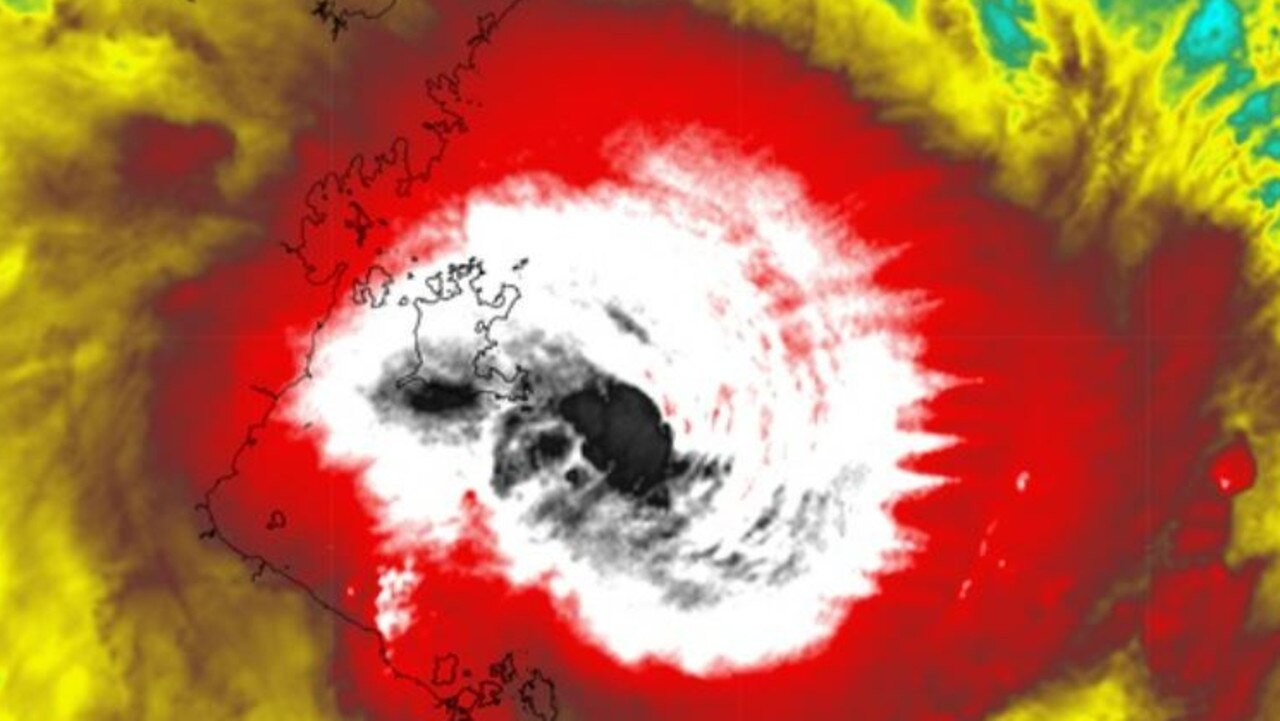Cyclone Megan is due to impact the north coast at the Northern Territory and Queensland borders bringing destructive winds of up to 200km/h at its core.
The cyclone intensified to a category 3 system on Sunday afternoon and is the fifth tropical cyclone to impact the country this season.
The bureau issued an alert at 3.30am (ACST) on Monday, warning residents to “take shelter” as the “very destructive core” of the cyclone will “start to impact the coast” between Bing Bong and the Queensland border in just a few hours.
The cyclone is due to make landfall on Monday evening or early Tuesday morning.
Wind gusts of up to 200km/h are possible at the system’s centre, while powerful winds of up to 125km/h are predicted to occur along the southwestern Gulf of Carpentaria coast and will extend to inland areas including Borroloola, McArthur River Mine, and Robinson River during the day.
Heavy to locally intense rainfall is also likely on the coast and in parts of the Queensland Gulf Country.
Widespread falls of 100-200mm are expected, with isolated falls of between 300 and 500 mm expected over the mainland.
Rainfall will likely be heaviest in the Carpentaria region of the NT, with areas on the western and northern flanks of the cyclone due to experience a drenching.
Already the cyclone has dumped half a year’s worth of rainfall over Groote Eylandt in the past 48 hours.
The rain gauge at Groote Eylandt Airport recorded 431mm of rainfall in the 24 hours to 9am on Sunday, making it the region’s second wettest day in 103 years of records.
It brings the total rainfall to 680.4mm in just 48 hours, over half their average annual rainfall of 1275.2mm.
Coastal residents between Nathan River and the Northern Territory-Queensland border are specifically warned of a dangerous storm tide as the cyclone centre crosses the coast. Tides are likely to rise significantly above the normal high tide, with damaging waves and dangerous flooding, the bureau warns.
The Northern Territory Emergency Service is urging communities in the warning zone to enact their emergency plan now, prepare their property by securing loose items, and prepare to take shelter.
Where possible they are encouraged to check on their neighbours and make sure they have enough water stored in case of supply issues following the cyclone’s impact.
The weather system is expected to take a similar track to Tropical Cyclone Lincoln last month, heading west towards central parts of the NT, although it is not expected to travel as far before dissipating.
